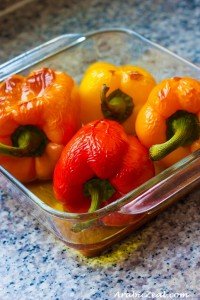Book Review ~ Marrakesh by Design by Maryam Montague
 It’s not often that I read an interior design book cover to cover. I had been waiting for some time for Marrakesh by Design, published last month and written by Maryam Montague, an American expat and hotel-owner living in Morocco. She writes the well-regarded blog My Marrakesh, and her home was featured in the April issue of Elle Decor magazine.
It’s not often that I read an interior design book cover to cover. I had been waiting for some time for Marrakesh by Design, published last month and written by Maryam Montague, an American expat and hotel-owner living in Morocco. She writes the well-regarded blog My Marrakesh, and her home was featured in the April issue of Elle Decor magazine.
There is a certain flair to Moroccan design—something I haven’t observed in other Arab countries. Of course, there are beautiful items from all over the Middle East and North Africa, but when I see iconic objects like painted tea glasses, a fanciful teapot, pierced lantern, door knocker, tagine, colorful pouf, or pointy slippers, I think that’s Moroccan, and I have a clear association with the country.
Meanwhile, many design elements highlighted in the book are not unique to Morocco but are Islamic and Arabian—familiar all around the region. As the author states, Morocco has design influence from the Arabs, Berbers, Turks, Spanish, French and other African countries.
This eclectic blend is featured in the book’s captivating photographs of real homes in Morocco. The author, who took most of the photos herself, showcases a wide range of living spaces—from simple to bohemian, from grand to humble, and from traditional to surprisingly contemporary and whimsical.
 Going way beyond adding a pouf or lantern to your living room, this book is divided into three parts. The first part “Discovering Moroccan Style” explores the architecture, colors, finishes and patterns of the country. Here the author goes into the artisanal and craft traditions of Morocco. I especially enjoyed the chapters on patterns and color.
Going way beyond adding a pouf or lantern to your living room, this book is divided into three parts. The first part “Discovering Moroccan Style” explores the architecture, colors, finishes and patterns of the country. Here the author goes into the artisanal and craft traditions of Morocco. I especially enjoyed the chapters on patterns and color.
The second part “Living Moroccan Style” provides examples of how to incorporate this style into bedrooms, salons, bathrooms, entries, gardens, and my favorite—kitchens. The last part of the book offers tips for buying carpets, pottery and all those distinctive Moroccan items. Finally, the book ends with lists of sources online and around the world for gathering these goodies.
The information is surprisingly detailed, like that on the art of zellij (mosaic tile), as well as the layout of the traditional Moroccan home and the meaning behind various motifs. Throughout the book are “Bring it Home” sidebars with hands-on projects for all types of living spaces. These practical ideas are interspersed with cultural information on such things as Moroccan greetings, superstitions, and even how to make Moroccan mint tea—all good stuff for lovers of Morocco.
As for me, the book has been a bit of a revelation. I have been collecting Arabian bric-a-brac for the past twenty years. But after I while, I stopped seeing my own things; they began to look like clutter. I drew inspiration from Maryam’s photos, which gave me fresh eyes to see my own home, my collections and the potential therein.
 Granted, I will not be stenciling my ceiling, re-tiling my bathroom, or making a fountain out of a flower pot. However, I just might add a pierced lantern above my dining table, buy a Berber carpet, rearrange my Hand of Fatima collection, and plant some jasmine by my door.
Granted, I will not be stenciling my ceiling, re-tiling my bathroom, or making a fountain out of a flower pot. However, I just might add a pierced lantern above my dining table, buy a Berber carpet, rearrange my Hand of Fatima collection, and plant some jasmine by my door.
Marrakesh by Design is for anyone who adores all things Moroccan or Arabian. Even if you are (like me) more of a daydreamer than a decorator, the photos alone are worth this book’s place on your coffee table—crafted, of course, out of an antique window.
To know more, here’s a 1-minute video introduction to Marrakesh by Design.
Question: What are your thoughts on Moroccan design or this book?









